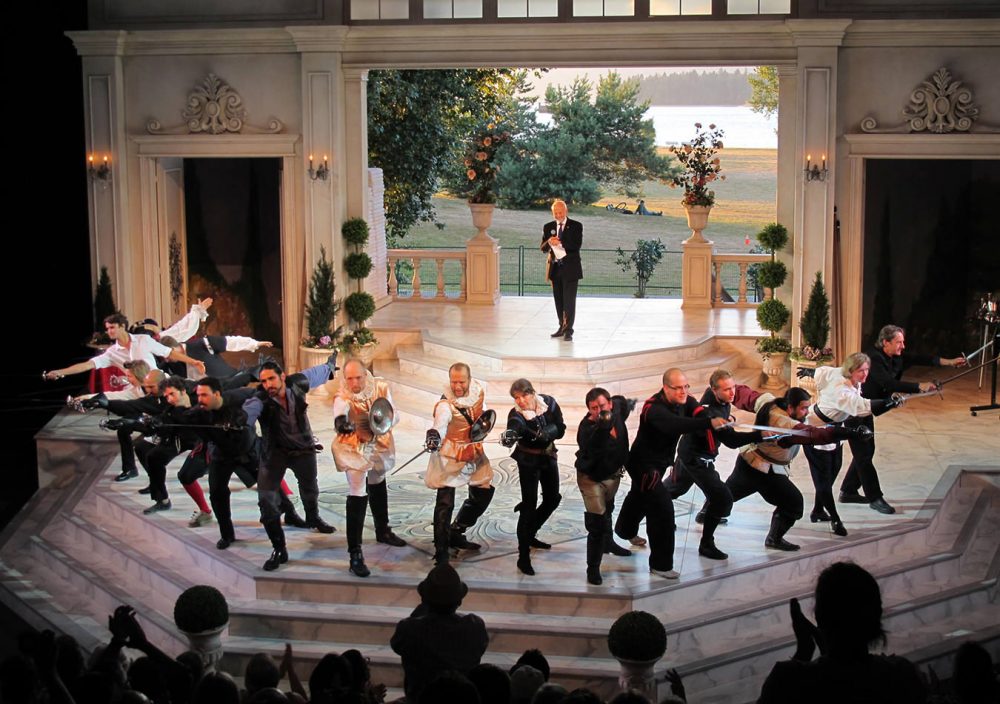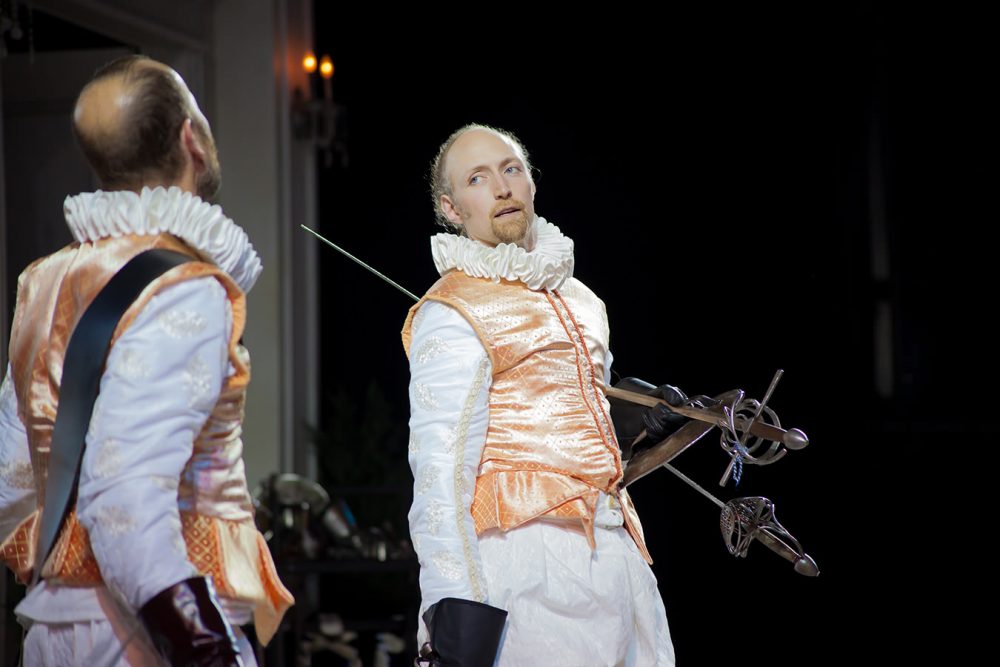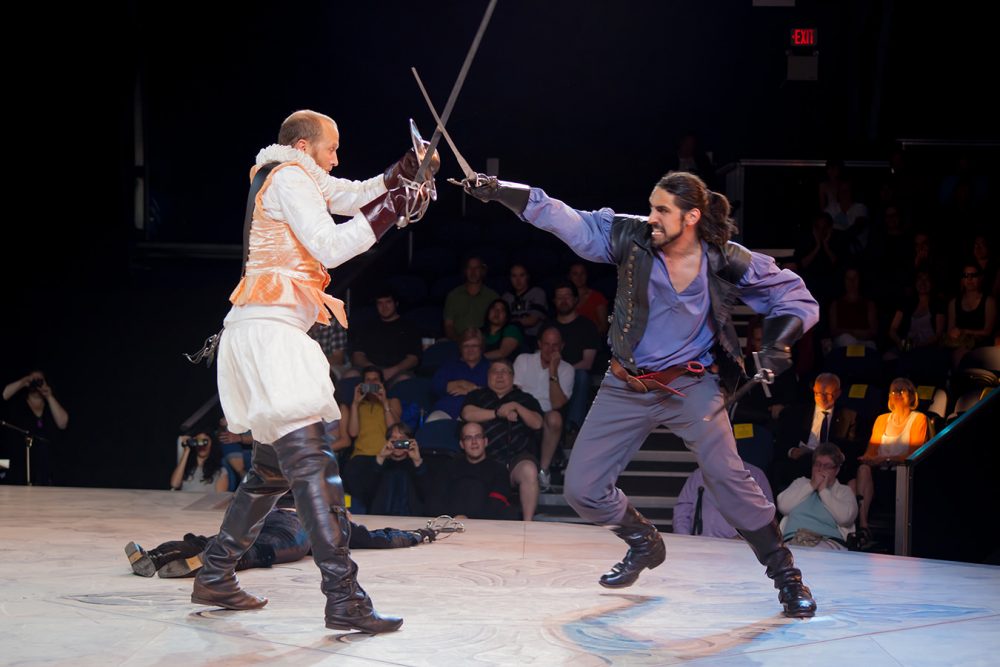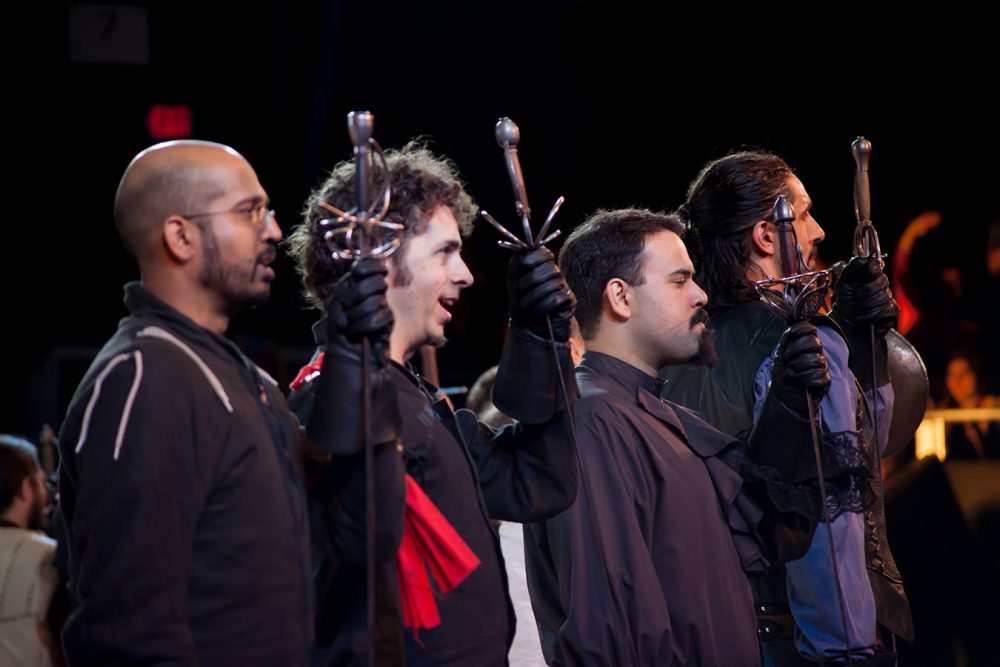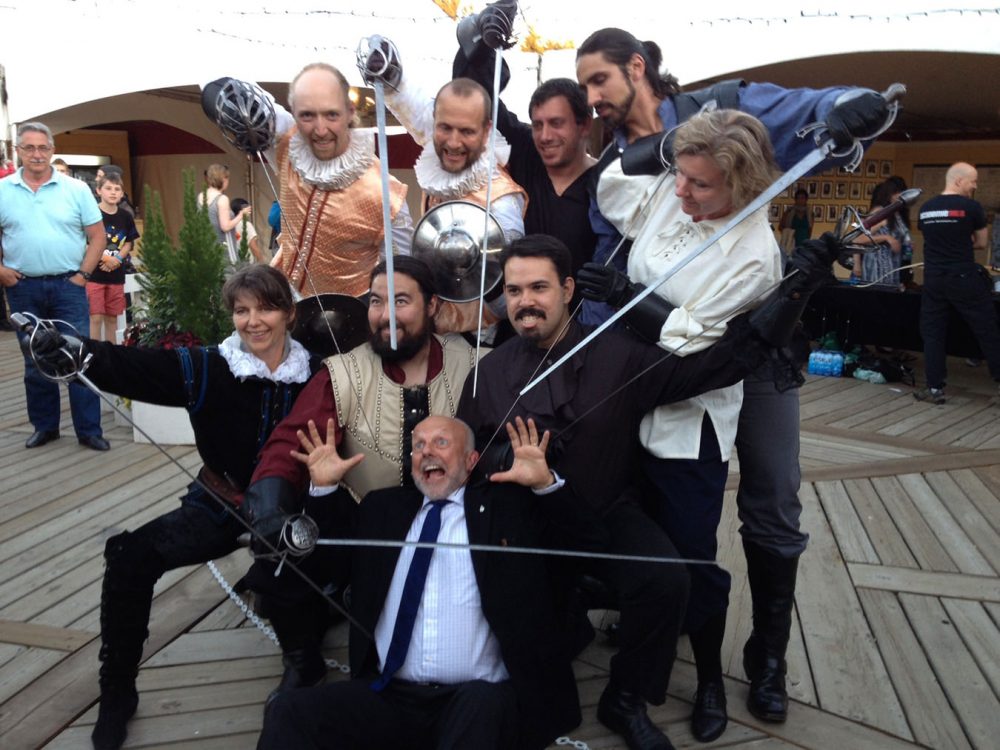The launch of C.C. Humphrey’s latest work of historical fiction, Shakespeare’s Rebel, was, as promised, a “swashbuckling night of swords and words,” held at Bard on the Beach, Vanier Park. It was a wholly entertaining evening—intellectually engaging with a riveting demonstration of physical prowess. Inspired by Humphrey’s abiding love for Hamlet and swordplay, Shakespeare’s Rebel chronicles the adventures of John Lawley, the resident fight choreographer at the Globe Theatre.
Humphrey prefaces the event by explaining that, in Shakespeare’s time, England was teeming with schools devoted to the rigorous study of sword mastery. And it was serious business indeed. The Company of Maisters of the Science of Defence was formed under Henry VIII’s rule to regulate this trade. There were multiple tiers of study from apprentice to master, and to ascend that ladder took the better part of one’s lifetime. Tests were public spectacles known as “prize fights”. They were regularly attended, and so audience members were familiar with techniques, expecting good, not “slapdash or tawdry” performances.
To the point, Devon Boorman, maestro d’armi and director of Academie Duello, conducts a prize fight, as it would have occurred in the early 16th century. A pair of students approach, salute, and begin to duel, stepping aside for the next challenger when hit. The longsword, sidesword and buckler, pole arms (spears and quarterstaffs), and the rapier all make an appearance.
Lest we forget it is a book launch after all, Humphrey then reads a passage from Shakespeare’s Rebel. A Bard alumni and practised thespian himself, Humphrey’s reading is vigorous, dynamic, and thoroughly entertaining.
Adding further insight to the evening is Nicholas Harrison, the Bard’s fight director of 15 years, who explains how the last fight sequence in Hamlet, between the Prince of Denmark and Laertes, is very much unique. Typically, Shakespeare offers no stage directions for combat in his plays; it is indicated simply by “They Fight”. However, in Hamlet, there are a few details that provide a framework for the choreographer. Myriad interpretations spring from within these parameters, and the possibilities are endless. For the uninitiated, Harrison’s cursory speech hints at the intricacies of fight choreography and implies that much more can be said about this fascinating topic. Of course, not to be left wondering, the audience is treated to a truncated performance of said fight.
The stage is then cleared for none other than Bard artistic director, Christopher Gaze, who reads another passage from Shakespeare’s Rebel. There is little more that needs to be said after that, and Humphrey concedes: “I was going to read the audio book myself, but now I think I might let him do it.”
Of course, the night is not complete without a finale of some sort, and so there is a lively fight involving Humphrey, Boorman, and the Academie Duello team. An evening of sharp wit and, luckily, dulled swords.

